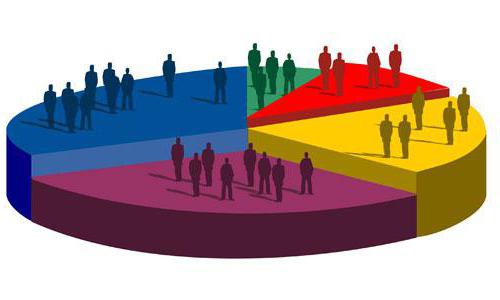One of the key components of socio-economic accounting is labor statistics. It characterizes the specifics of regional location, composition, characteristics of the use of labor, dynamics and level of productivity, salary costs, security, security, security conditions and other processes and phenomena. 
Labor resources
They are part of the citizens who are able to work. This category includes:
- Able-bodied persons. They are men 16-59 years old and women 16-54 years old (inclusive). Disabled persons are excluded from them.
- Working adolescents under 16 years of age and citizens older than the above working age.
All other persons form an economically inactive population. This is the part of citizens who cannot work.
Employment
In Soviet times, universal labor duty was established. The government of the country set itself the task of completely eliminating unemployment and ensuring the absolute employment of citizens. At the end of the 50s. in the USSR in statistical practice, balance sheet designs began to be used. The program of their introduction began to gradually expand, improve and develop at the regional level. The main role was played by the balance of labor resources.
It comprehensively combined the data of statistical bodies, other departments and ministries on the composition, strength, and use of labor. Based on these indicators, the sources of the formation of labor reserves by region, industry, ownership, and other criteria were investigated. In market conditions, volunteering came to replace the obligation to work. Unemployment in the country was officially recognized. Together with the market for services, goods, and securities, a new sector began to form - the labor sector. It has become a key tool in the process of generating supply and demand for labor, redistributing it among the relevant sectors and regions. 
Inactive population
This, as mentioned above, is that part of the citizens that is not just not working, but not capable or unwilling to engage in professional activities. The following categories of economically inactive population are distinguished:
- Students and students, cadets and students who attend full-time educational institutions (including doctoral studies and postgraduate studies).
- Citizens who receive a pension on preferential terms and old age, as well as the loss of a breadwinner.
- Persons with disabilities 1, 2 and 3 gr.
- Citizens engaged in caring for children, sick or elderly relatives, housekeeping.
- Persons who despaired of finding a job. That is, these are citizens who have stopped the search and have exhausted all available opportunities for obtaining it. However, they are able and willing to work.
Economically inactive people also include people who do not need work. Moreover, the source of their income does not matter. Thus, a part of economically inactive citizens is quite able-bodied. 
Reasons for the transition of citizens to an economically inactive population
Among the main prerequisites should be highlighted:
- Macroeconomic production downturn.
- Structural adjustment of the management system.
- Strengthening competition in the labor market. It leads to the elimination of able-bodied citizens from it and their transition to an economically inactive population.
- A significant increase in the standard of living of the wealthy part of society.This expands the possibilities for raising children, housekeeping, and carrying out other activities other than professional (labor).
- Concealment by some citizens of their participation in the work for any reason. This distorts the real size of the economically inactive population.
- Traditional for a crisis situation, an increase in the number of students. This is due to the fact that education in such situations becomes the main alternative to unemployment.

Grouping Criteria
The main features according to which citizens are included in the economically inactive population are:
- Age.
- Floor.
- Location.
- Work experience.
- Industry affiliation in the last place of professional activity.
- The level of education.
- Duration and reasons for unemployment.
Of particular importance is the last criterion. This is due to the fact that the economically inactive population acts as a source of the formation of labor resources.
Busy and unemployed
These categories belong to the economically active population. Employees are citizens (women and men) from 16 years old, as well as subjects younger than the specified age, if they:
- We performed employment for a fee (both in cash and in kind), carried out other activities that brought them income.
- Temporarily absent from the slave. location for various reasons. They can be illness, vacation, weekends, days off, absenteeism, etc.
- Carried out activities at a family business without payment.
Unemployed persons are considered temporarily economically inactive. This group includes subjects of both sexes from 16 years old if they:
- Do not have a job or occupation that generates income.
- Ready to carry out professional activities.
- Looking for work.
All these citizens provide an offer on the labor market. 
Conclusion
The number of entities employed in sectors of the economy is an indicator reflecting demand in the labor market. Each state seeks to provide all able-bodied citizens with work. Nevertheless, in any economy there is such a thing as unemployment. This is due to the fact that at present supply in labor markets exceeds demand. Meanwhile, in some sectors the situation is just the opposite. Many enterprises lack specialists, and the labor market cannot provide them. Currently, according to statistics, in Russia there are more economically active people. However, there is a problem of unemployment in the country.
